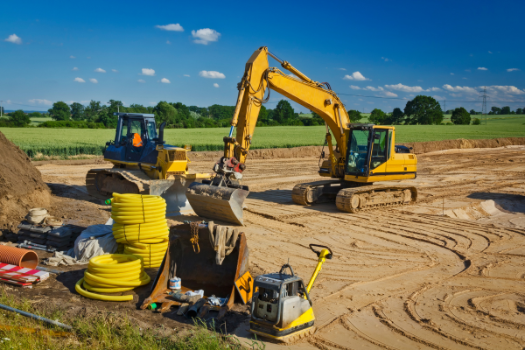
BIM Strategies for Maximizing Equipment Efficiency
Introduction: Setting the Stage for Efficiency
Equipment efficiency is a cornerstone of successful construction projects. When equipment is managed effectively, projects stay on schedule, budgets are maintained, and productivity soars. However, inefficiencies like idle time, mismanagement, or unexpected breakdowns can lead to costly delays.
This is where Building Information Modeling (BIM) becomes a game-changer. BIM is a digital process that integrates equipment data, workflows, and planning into one streamlined system. It allows construction teams to better allocate resources, predict maintenance needs, and ensure that equipment performs at its best throughout a project.
Globally, more construction companies are turning to BIM to improve their operations. The increasing adoption highlights its credibility as a transformative tool for equipment management.
In this article, we’ll explore actionable BIM strategies that can help maximize equipment efficiency. These approaches aim to make construction projects more cost-effective, streamlined, and productive.
Understanding Equipment Efficiency in Construction
Equipment efficiency is about using tools and machinery in the most productive way. It ensures that construction projects stay on time and within budget. When equipment runs efficiently, there’s less waste, fewer delays, and more predictable outcomes.

However, achieving this efficiency comes with challenges. Idle time is a major issue when equipment isn’t properly scheduled. Maintenance problems can lead to breakdowns that stall progress. Misallocation of machinery often results in unnecessary costs and resource shortages.
BIM provides solutions to these common problems. Its data-driven insights help teams plan equipment use more effectively. BIM tracks performance, predicts maintenance needs, and ensures the right tools are in the right place at the right time. By addressing these challenges, BIM helps construction teams work smarter, reduce downtime, and improve overall project timelines.
The Role of BIM in Equipment Optimization
BIM transforms how construction teams plan and manage equipment. By integrating 3D models with detailed equipment specifications, it allows precise planning for every phase of a project. This ensures that equipment is used efficiently and avoids unnecessary costs or delays.

One of BIM’s standout features is real-time monitoring. It tracks equipment usage and performance, giving teams instant updates. This helps identify inefficiencies early, reducing downtime and improving productivity. Predictive analytics within BIM takes this a step further. It forecasts maintenance needs, allowing teams to schedule repairs before breakdowns occur.
BIM also fosters collaboration and transparency. With centralized data, all team members can access and share up-to-date information about equipment. This streamlines decision-making and ensures everyone is aligned. Together, these benefits make BIM an essential tool for optimizing equipment and ensuring smooth project workflows.
Key BIM Strategies for Maximizing Equipment Efficiency
A. Integrating Equipment Data into BIM Models
Embedding detailed equipment data into BIM models is critical for effective project management. This data includes specifications, maintenance schedules, and operational requirements. With this information in one place, teams can easily track performance and identify inefficiencies. BIM also enables lifecycle cost analysis, helping construction companies evaluate the long-term expenses of their equipment. This ensures smarter investment decisions and better resource utilization throughout the project.

B. Leveraging 4D BIM for Equipment Scheduling
4D BIM adds the dimension of time to project planning, making equipment scheduling more precise. By aligning equipment use with project timelines, it helps avoid idle time and eliminates bottlenecks. For instance, using 4D BIM, teams can visualize when a crane will be needed on-site and ensure it’s scheduled only for those specific phases. This leads to smoother operations and improved project timelines.
C. Using BIM for Maintenance Management
BIM’s predictive maintenance tools are a game-changer for reducing unexpected equipment failures. By analyzing data, BIM can predict when maintenance is due, allowing teams to schedule repairs before breakdowns occur. This proactive approach minimizes disruptions and keeps the project on track. For example, monitoring a generator’s usage data through BIM can alert teams to service it before it impacts productivity, boosting efficiency across the board.
D. Enhancing Collaboration Through BIM Workflows
Collaboration is essential for effective equipment management. BIM improves communication by centralizing equipment data, making it accessible to all team members. This transparency ensures better coordination and allocation of resources. For example, BIM workflows can help site managers and equipment operators align schedules, reducing conflicts and delays. These collaborative practices lead to more streamlined operations and improved overall efficiency.
Benefits of BIM for Equipment Efficiency
BIM offers several tangible benefits that significantly improve equipment efficiency in construction projects.
Reduced Operational Costs: BIM helps lower costs by minimizing idle time and ensuring equipment is only used when needed. For instance, tracking machinery usage through BIM can identify underused assets, allowing them to be reallocated or removed from the project, saving money.
Enhanced Equipment Utilization Rates: With BIM, teams can optimize how equipment is deployed on-site. Real-time data ensures that each machine is used to its full potential. For example, by analyzing usage patterns, BIM can recommend redistributing machinery to meet demand in high-activity zones.

Improved Project Timelines and Delivery: BIM’s predictive tools prevent delays caused by equipment breakdowns or mismanagement. Proactive scheduling and maintenance keep everything on track, ensuring that projects meet deadlines. A hypothetical scenario could involve a crane requiring maintenance; BIM alerts the team in advance, avoiding any impact on the construction schedule.
Data-Driven Decision-Making for Future Projects: The data collected in BIM is invaluable for planning future projects. It helps identify trends in equipment efficiency, enabling better investment decisions. For example, if a certain type of excavator consistently outperforms others, teams can prioritize its use in upcoming jobs.
Together, these benefits make BIM essential for smarter, more efficient equipment management.
Future Trends in BIM and Equipment Management
The future of BIM and equipment management is evolving with exciting innovations. AI-driven analytics is one key trend, offering deeper insights into equipment performance. By analyzing vast amounts of data, AI can predict wear and tear, recommend optimal usage patterns, and even identify ways to extend equipment lifespan. This ensures smarter decisions and fewer disruptions.

The integration of IoT devices is also transforming equipment monitoring. Sensors embedded in machinery provide real-time updates on performance, location, and condition. For example, an IoT-enabled excavator can send alerts for maintenance needs or notify teams when it’s underutilized, improving efficiency across the board.
Another significant trend is the focus on sustainable construction practices. BIM is enabling teams to reduce waste and energy use by optimizing equipment deployment and tracking carbon footprints. For instance, choosing energy-efficient machinery or limiting unnecessary operation hours contributes to greener projects.
Together, these trends promise a future where BIM makes equipment management smarter, more efficient, and environmentally friendly.
Conclusion: The Path to Smarter Equipment Management
Maximizing equipment efficiency is essential for successful construction projects. BIM provides the tools to optimize planning, monitor performance, and enhance collaboration. By integrating equipment data, leveraging 4D scheduling, and using predictive maintenance, teams can reduce costs, improve timelines, and make data-driven decisions.
Adopting BIM strategies is a step toward smarter, more efficient construction workflows. These strategies not only solve current challenges but also prepare teams for future innovations. Now is the time to embrace BIM solutions and transform how equipment is managed in your projects. Start today and unlock new levels of efficiency and productivity.